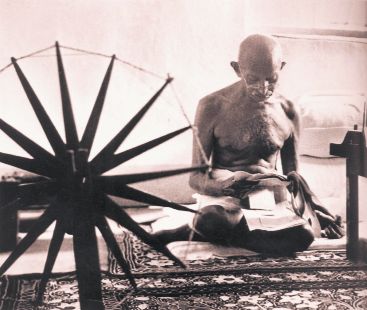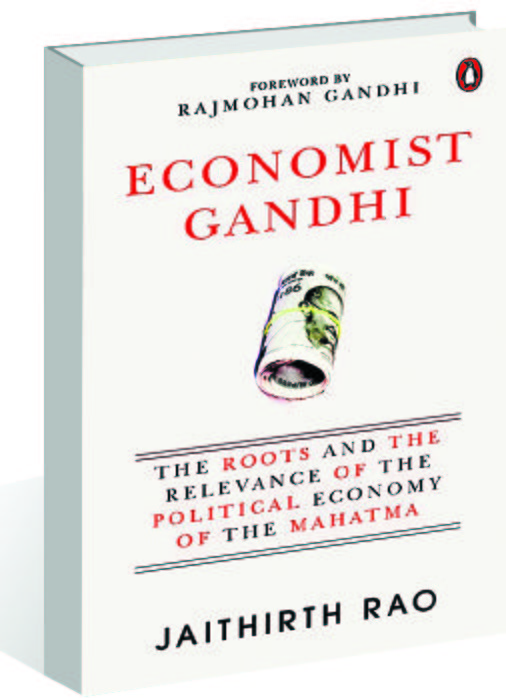Economist Gandhi: The Roots and the Relevance of the Political Economy of the Mahatma by Jaithirth Rao. Penguin Random House. Pages 256. Rs599
Book Title: Economist Gandhi: The Roots and the Relevance of the Political Economy of the Mahatma
Author: Jaithirth Rao
Manish Sharma
In the very first line of the Foreword, Rajmohan Gandhi sets the tone for the book: “While its title might surprise those unaware of Gandhi’s involvement with economics, the book also enlightens the reader with some of Gandhi’s views on ethics, religion, human nature and society.”

Confronting Gandhi the economist, the author Jaithirth Rao, he writes, identifies a key Gandhi focus: the consumer. “Concerned as Gandhi is with the worker in a plant, with the mill’s owner, and with the spinner and weaver of khadi, he is just as keen, Rao shows, on the consumer of the cloth, or of anything else jointly created by labour and capital.”
The author has effectively divided the easy-to-read and cogent work into 12 chapters, offering insights into the influences on the Mahatma since his childhood.
The first chapter, with a focus on applied economics, mentions how Gandhi’s philosophy has been used by people like Nobel laureate George Akerkof and Rachel Kranton. “Gandhi had proposed a radical system and methodology for school education through Nai Talim or New Learning programme. This approach places tinkering at the heart of learning and skill development. It deserves to be studied and explored as the Mahatma’s unique contribution in the area of the economics of human capital development.” In the same chapter, the author mentions that Gandhi was not anti-business or anti-capitalist.
‘Gandhi, the English Lawyer’ talks about his concept of trusteeship, considered one of the high points of English common law. It shows how his thoughts and practical ideas were used later on in Article 142 of the Constitution, based on the concept of ‘equity within us’, which was the centrepiece of Gandhi’s thought. The Mahatma attributed this to the Gita’s teachings and the concept of non-possession.
‘Bania Gandhi’ talks about his return from South Africa in 1915, his tour of India and identifying Ahmedabad as his main centre of action because of the wealthy Jain ‘Anandji Kalyanji Trust’. It maintained the upkeep of important Jain temples and believed in the concept of service to others.
The chapter ‘Gandhi and the Christian Message’ starts with his lecture in 1916 on ‘Does economic progress clash with real progress?’, which in a way corelates with the love for the Gospels and his first book ‘Hind Swaraj’, where he mentions that ‘Jesus is hailed as the greatest economist of his time’.
‘Gandhi and the Isavasya (also known as Isa) Upanishad’ helps in understanding his views on political economy, and how religion and scriptures changed his perception about wealth, capitalism and trusteeship, and centered him towards humanity.
In ‘Adam Smith and the Mahatma’, the author mentions that the interesting thing about the two was that they were both acutely sensitive to the need to attempt one’s level-best to extend personal moral judgments into the sphere of social interactions with other human beings. Gandhi supported the free market and also emphasised individual freedom.
‘Economist Gandhi: A Guru Relevant for Today’ defines the relevance of Gandhi for the wealthy, the poor, for business relationships, the state and above all, for human capital. And all these can be seen in his principles of truth, non-violence, charkha and Nai Talim.
According to Gandhi, life cannot be divided into watertight compartments. The author quotes him: “I do not know of any religion apart from human activity. It provides a moral basis of all other activities, which they would otherwise lack, reducing life to a maze of sound and fury signifying nothing.”
An omission, if any, in the scholarly volume is less space to peasant movements and mill strikes.














